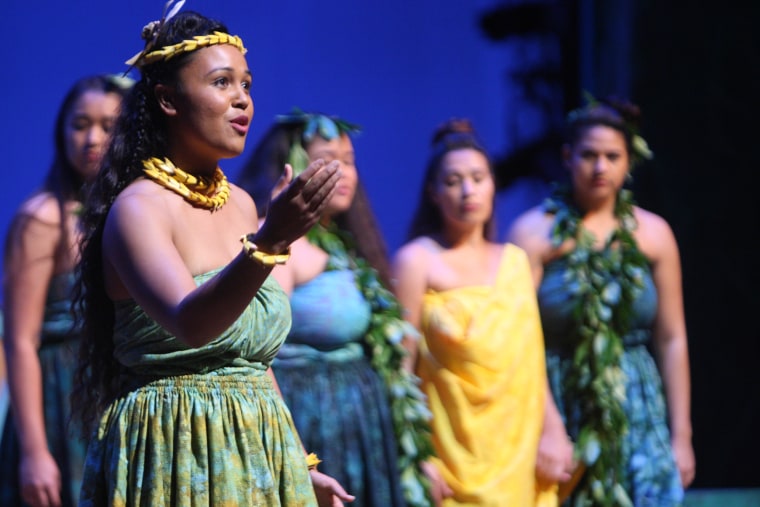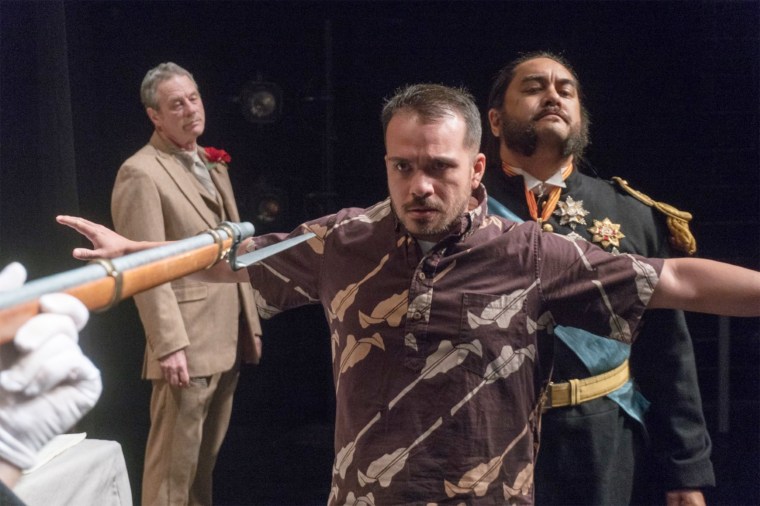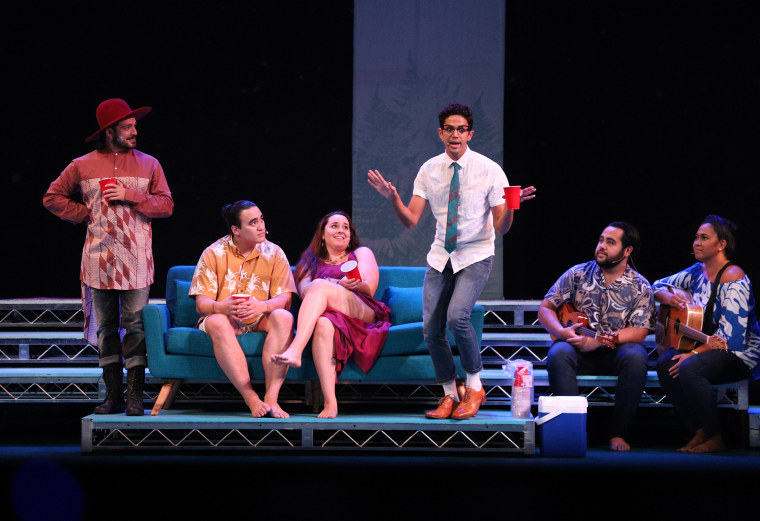As Tammy Haili‘ōpua Baker wondered what play to produce for her first show running the Hawaiian theater program at the University of Hawai‘i at Mānoa, a book literally fell off the shelf and hit her on the head.
The director of the program took it as a sign from her ancestors and produced "Lā‘ieikawai," a traditional Hawaiian romance, in 2015 for the department's first hana keaka (performance).
The groundbreaking show performed to sold-out audiences at the university and went on to be featured as the first Hawaiian language play at the Kennedy Center American College Theater Festival in 2016.

Baker founded the Hawaiian theater department in 2014 to revitalize the native Hawaiian language, which is endangered without many speakers today.
For her, the beauty of the program is creating a place for students to engage in the Indigenous language outside of a traditional lesson in the classroom.
“They’re seeing humanity in front of them, experiencing a myriad of emotions and going on particular journeys. There’s this engagement in the language, there’s a celebration, there’s laughing and crying in the language that they get to experience. So it’s a way of embodying culture and language,” Baker tells TODAY.com.

While “Lāʻieikawai" is based on a traditional story, Baker's program also offers courses to help students create their own modern works in the native Hawaiian language, like song composition and scripting.
Her son, Kaipulaumakaniolono, 24, a graduate of the university and his mother’s program, recently showed Hawaiian school children a clip of a play he wrote and directed that included a full rap battle. He watched as the students’ jaws dropped because they’d never heard the Hawaiian language employed in a way that was fun, contemporary and relatable.
“For me, moments like that, especially when they come and visit school shows and they cheer or they cry or, you know, they experience the emotional capacity of our language. That has been one of the hardest things to revitalize in a language, is that depth of human experience that can be felt through it,” Kaipulaumakaniolono tells TODAY.com.
“Whenever we are able to make that connection with an audience, especially with our young people, those are the moments that really remind me and keep me invested,” he says.
For those who don’t speak the language, each production has an extensive play guide that breaks down the synopsis of each scene in both Hawaiian and English.
“Being grounded in your language helps you to be grounded in your identity, who you are, where you come from, and it helps you to navigate where you’re going.”
Tammy Haili‘ōpua Baker Hawaiian Theater Program Director
The guide includes additional materials that delve into the social and political context of the show and Baker hosts post-show discussions for audience members to digest what they’ve seen.
Right now Baker, who is originally from the island of Kauai, is the only faculty member teaching in the Hawaiian and Indigenous program she created. She didn't grow up as a native speaker herself, but remembers a great aunt who spoke the language fluently. Instead, she learned Hawaiian later at university.
"Language was a means to reconnect with the history and culture of my ancestors, their ways and beliefs, and language helped me understand who I come from, what that meant and how to navigate modernity. I found my identity through speaking the language of my ancestors," she says.
Now, everyday, she says she pinches herself because of her job.
“I just sit with the stories of my ancestors and language of my ancestors and teach that, elevate that and honor that,” she says.

Baker explained that traditional Hawaiian performances have four pillars: hana noʻeau (visual and performing arts), moʻolelo (stories, histories, narratives), kūʻauhau (genealogy and genealogical ties to people, land, deities) and ʻŌlelo Hawaiʻi (Hawaiian language).
She often weaves these forms into each performance, including chants, poetry, puppetry, hula and other creative expressions.
"I feel like language and our stories, that's one way for us to hold on to who we are," Baker says. "It's one way for us to stay connected to our kupuna (ancestors). It allows us to understand a different worldview. And I think helps us with our identity.
"Being grounded in your language helps you to be grounded in your identity, who you are, where you come from, and it helps you to navigate where you're going," she continues. "So language is the key. It's the key to unlocking and understanding. And it's also the key in our future, to continue as Kanaka Maoli (Native Hawaiians), as Indigenous peoples of this land, we have to have that knowledge that is upheld in our stories and in our language."

And it seems she's just getting started. The department was recently granted about $360,000 to establish a research institute for Indigenous performance.
Baker's son says he believes there’s endless potential for modern productions from Indigenous Hawaiians who have their own stories to tell in their own language.
“We believe in our language. We believe in our culture. We believe in getting these stories out to our communities so that they can see the value in and help their understanding of what it means to be Hawaiian in the world,” he says.
For Baker, watching the next generation practice and work on Hawaiian theater is a deeply rewarding experience.
She recalls sitting in rehearsal one night last year, overcome with tears as she watched her son direct a Hawaiian musical love story. Her daughter was in the play, along with her nieces.
“My children would fall into the category of native-speaking individuals who are children of second-language speaker parents,” she says.
“That generation of children who are being raised currently in a household by second-language speaker parents is growing, there’s a lot more of them now. And if they maintain the language and pass that down to their children, then we have a kind of a rebirth of native speaker to native-speaker child.”
Related:
